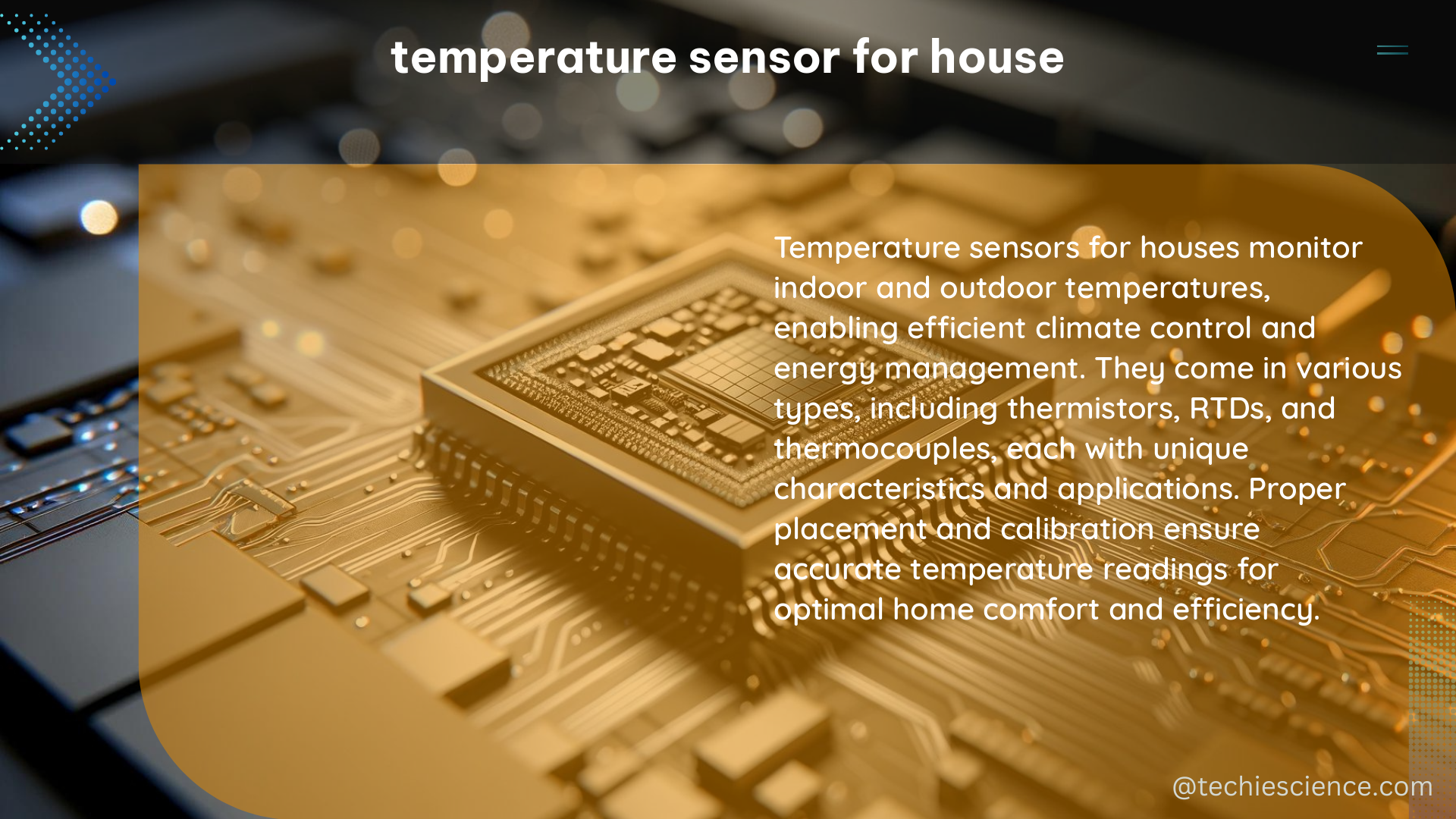Temperature sensors for houses come in various types, each with its unique features, technical specifications, and applications. This response focuses on two primary temperature sensors: the DS18b20 and the MAX30205.
DS18b20 Temperature Sensor
The DS18b20 is a one-wire digital temperature sensor that can measure temperatures from -55°C to +125°C (-67°F to +257°F) with an accuracy of ±0.5°C over the range of -10°C to +85°C (14°F to 185°F). It has a 12-bit resolution, which translates to a temperature measurement accuracy of 0.0625°C. The sensor’s small size (3mm x 3mm) and low power consumption (600µA typical conversion supply current) make it suitable for various applications, including weather-exposed civil infrastructure and wearable devices.
To improve the accuracy of the DS18b20 temperature sensor, you can implement pre-filtering techniques or subtract the raw sensor reading from the 12-bit equivalent of your reference reading, followed by taking the average of those residuals as your bin category. This approach can help minimize errors and provide more accurate temperature measurements.
The DS18b20 sensor has the following key specifications:
| Specification | Value |
|---|---|
| Temperature Range | -55°C to +125°C (-67°F to +257°F) |
| Accuracy | ±0.5°C over the range of -10°C to +85°C (14°F to 185°F) |
| Resolution | 12-bit (0.0625°C) |
| Size | 3mm x 3mm |
| Power Consumption | 600µA typical conversion supply current |
MAX30205 Temperature Sensor

The MAX30205 is a high-accuracy temperature sensor with a 0.1°C accuracy and 16-bit (0.00390625°C) temperature resolution. It operates on a low power supply range (2.7V to 3.3V) and has a low conversion supply current (600µA typical) and shutdown mode, making it suitable for battery-powered applications.
The MAX30205 sensor’s lockup-protected I2C serial bus ensures reliable data transmission, and its small package size (3mm x 3mm) minimizes the footprint for wearable applications. However, there is evidence that these sensors pick up an offset when they are potted in epoxy, possibly due to pressure as the compound contracts.
The MAX30205 sensor has the following key specifications:
| Specification | Value |
|---|---|
| Accuracy | 0.1°C |
| Resolution | 16-bit (0.00390625°C) |
| Power Supply Range | 2.7V to 3.3V |
| Power Consumption | 600µA typical conversion supply current |
| Interface | Lockup-protected I2C serial bus |
| Size | 3mm x 3mm |
Temperature Sensor for House DIY
For DIY temperature sensor projects, the DS18b20 is a popular choice due to its low cost (around $2.50 each) and ease of use with one-wire digital interfaces. The DS18b20 can be connected to a microcontroller, such as an Arduino or Raspberry Pi, to read temperature data and send it to a data logger or a cloud platform for visualization and analysis.
When implementing a DIY temperature sensor project, consider the following steps:
-
Select the temperature sensor: Choose a suitable temperature sensor based on your project requirements, such as the DS18b20 or MAX30205. Consider factors like temperature range, accuracy, resolution, power consumption, and interface compatibility.
-
Connect the sensor to a microcontroller: Connect the temperature sensor to a microcontroller, such as an Arduino or Raspberry Pi, using the appropriate interface (one-wire digital or I2C). Ensure proper wiring and power supply connections.
-
Write a script to read temperature data: Write a script or program to read temperature data from the sensor and format it for transmission to a data logger or cloud platform. This may involve using sensor-specific libraries or protocols.
-
Set up data logging or cloud platform: Establish a data logging system or connect to a cloud platform, such as InfluxDB and Grafana, to store and visualize the temperature data over time. Configure the necessary infrastructure and connectivity.
-
Implement data analysis techniques: Implement data analysis techniques, such as pre-filtering or residual analysis, to improve the accuracy of temperature measurements. This may involve applying statistical methods or machine learning algorithms to the collected data.
By following these steps, you can create a DIY temperature sensor system for your house that provides accurate and reliable temperature data for various applications, such as home automation, energy management, or environmental monitoring.
References
- u/joshdholtz, “Monitor your Temperature Sensor activity on the Home Screen,” Reddit, 2023-02-13, https://www.reddit.com/r/shortcuts/comments/1114v84/monitor_your_temperature_sensor_activity_on_the/
- Ed, “Improving the Accuracy of 1-Wire DS18b20 Temperature Sensor,” The Cave Pearl Project, 2016-02-12, https://thecavepearlproject.org/2016/02/12/triage-step-for-cheap-ds18b20-temperature-sensors/
- Mauricio Pereira and Branko Glisic, “Detection and quantification of temperature sensor drift using probabilistic neural networks,” ScienceDirect, 2023-03-01, https://www.sciencedirect.com/science/article/pii/S0957417422019029

The lambdageeks.com Core SME Team is a group of experienced subject matter experts from diverse scientific and technical fields including Physics, Chemistry, Technology,Electronics & Electrical Engineering, Automotive, Mechanical Engineering. Our team collaborates to create high-quality, well-researched articles on a wide range of science and technology topics for the lambdageeks.com website.
All Our Senior SME are having more than 7 Years of experience in the respective fields . They are either Working Industry Professionals or assocaited With different Universities. Refer Our Authors Page to get to know About our Core SMEs.